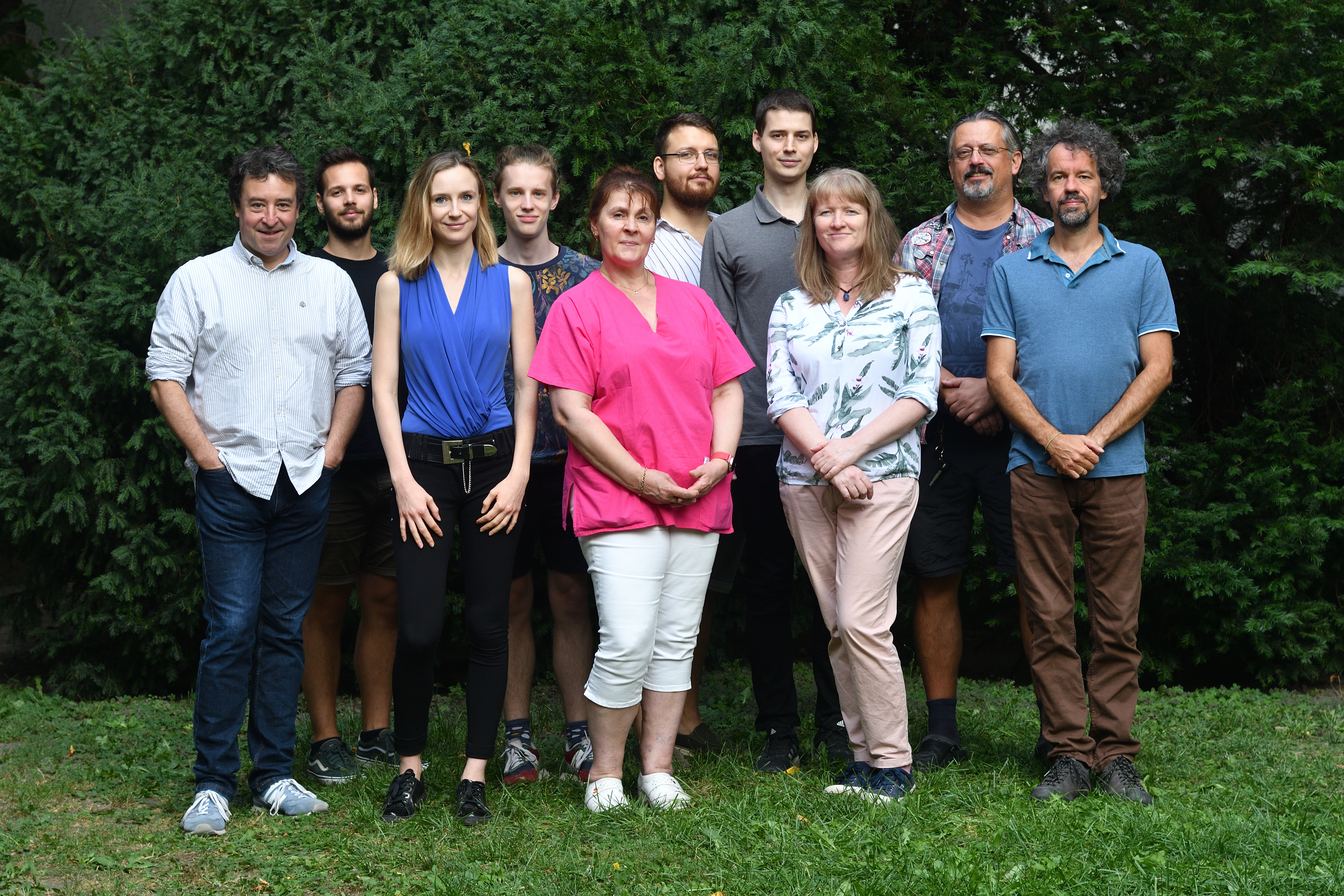Superresolution Microscopy and Pharmacology
Our research group is actively involved in technological innovations in Superresolution Microscopy and Pharmacology.
Knowing the precise anatomical localisation of proteins expressed in our brain is essential to understand their role in physiological and pathophysiological processes.
Our laboratory uses a variety of fluorescence microscopy systems, or a combination of them, to map the localisation of the molecules of interest alongside known anatomical markers. To do this, we most often use selective fluorescent markers to track proteins in neural tissue or cell culture. While high-throughput digital slide scanners are used for broad anatomical studies, finer, cellular-level imaging is mainly performed using confocal scanning microscopy.
To perform subcellular, nanoscale studies, we use so-called super-resolution microscopy in addition to conventional fluorescence light microscopy techniques.
The resolution of classical fluorescence imaging is limited by the diffraction of light due to its wavelength nature, so the resolution of these optical systems is 2-300 nm in the lateral direction and 5-600 nm in the axial direction. In contrast, the localisation precision achieved by so-called STORM (Stochastic Optical Reconstruction Microscopy) single molecule localisation microscopy can be as high as 20-30 and 50-60 nm in the lateral and axial directions, respectively.
Our laboratory has applied this form of advanced microscopy for the visualisation of a wide range of proteins in both cell culture and brain tissue, and we have contributed to the widespread use of this technique in neuroscience through several technical innovations. The open source software VividSTORM, developed by our group, helps to easily correlate STORM data with the spatial information provided by confocal microscopy images, allowing us to analyse the location of proteins with nanometre precision in a broader anatomical context.
An important technical development of our group is the development of a new labelling method to investigate proteins with conventional or super-resolution microscopy systems that are of known neuropharmacological importance but lack a selective labelling agent, such as an antibody. Thus, for these drug targets, the precise location in the brain where drugs act on them remains unknown. To overcome this problem, we have collaborated with György Keserű's medicinal chemistry research group to develop a new technical approach that can visualise the nanoscale distribution of fluorescently labelled drug molecules in brain tissue. Our continuously evolving method, called PharmacoSTORM, provides a new microscopic labelling toolbox for representatives of many different protein families.






